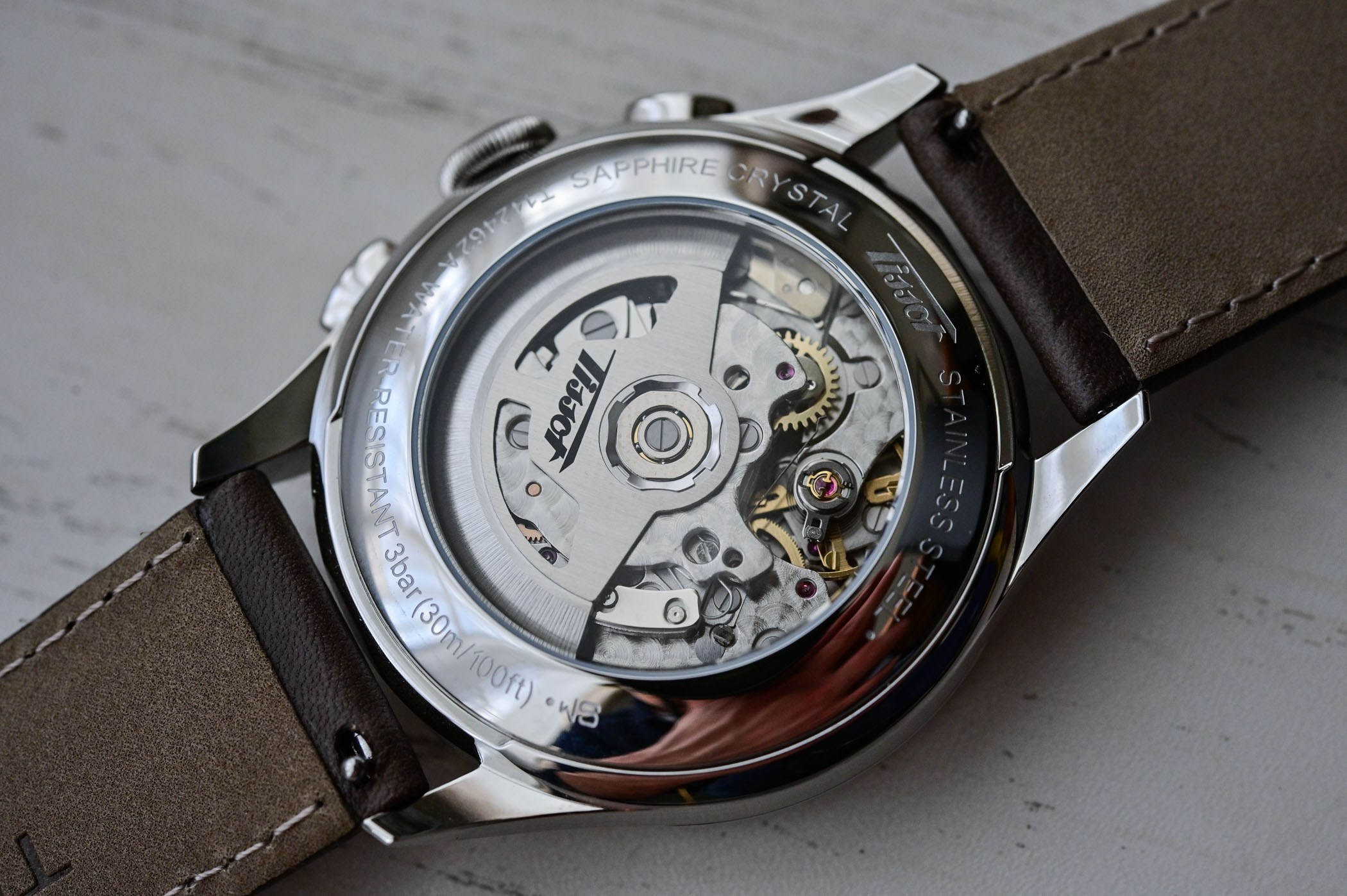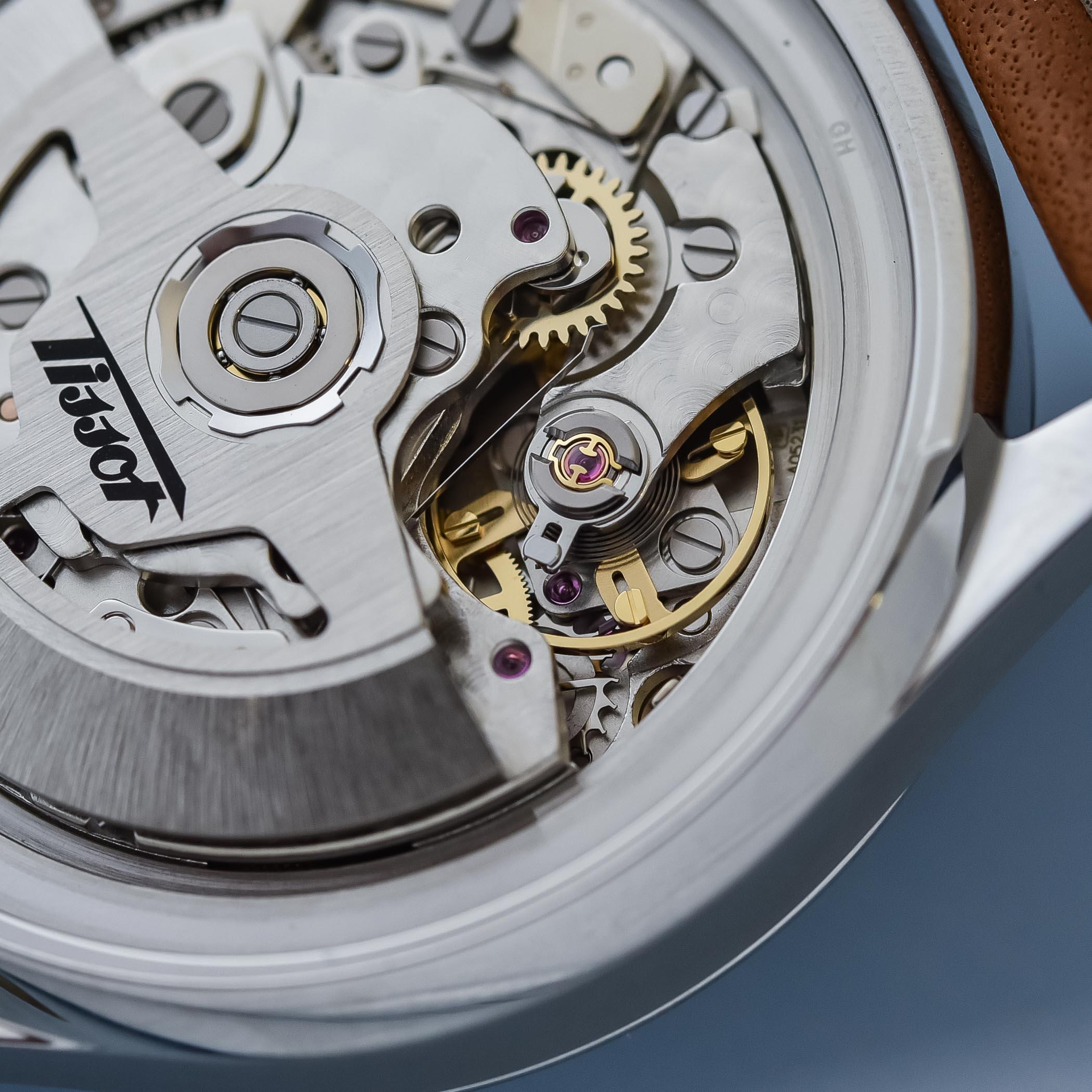A Closer Look At How Tissot Drastically Improved The Iconic Valjoux 7750 Chronograph Movement
The venerable chronograph meets the requirements of the 21st century.

Just yesterday, Tissot introduced a lovely and affordable vintage-inspired chronograph, the Telemeter 1938. The watch’s bi-compax layout comes courtesy of a legendary chronograph calibre, one of the most widely-used movements in the industry, the ETA-Valjoux 7750. This precise, tried-and-tested workhorse was created in the early 1970s. In its 50-year history, the Valjoux calibre has naturally evolved, with different variants, functions, and layouts. The movement has also been updated in the frame of continuous optimisation, in particular, by incorporating modern technologies to evolve in synchrony with the times. This brings us here, with the calibre reference A05.231, the latest evolution of the 7750 that Tissot has incorporated in its lovely vintage-inspired watch.
Valjoux (which stands for Vallée de Joux, a historically important location for the Swiss industry) was a manufacturer of mechanical movements, specialising in chronographs. The company’s movements powered the products of some of the most prestigious brands (Patek Philippe, Audemars Piguet, Rolex or Vacheron Constantin to name a few) for decades. Today, as the result of successive consolidations of movement manufacturers in the Swiss watch industry, Valjoux has been absorbed by the Swatch Group, more precisely into powerhouse ETA.
The Valjoux 7750 was created in the early 1970s as the company’s answer to the advent of the automatic chronograph, to catch pace with its competitors following the introduction of movements such as the Zenith El Primero, the Heuer/Hamilton/Breilting Calibre 11 or the Lemania 1040. Indeed, if chronograph wristwatches have existed since the beginning of the 20th century, all of them were fitted with hand-wound movements until 1969. In the 1960s, it was time for the chronograph to modernize itself, by adding the practicality and comfort of automatic winding.

Often reported to be one of the first movements created with the aid of the computer, the Valjoux 7750 was designed by Edmond Capt. It is based on the manual Valjoux 7730 chronograph (itself derived from the Venus 188). As such, it features a cam-and-lever command rather than a column-wheel to operate the different functions of the chronograph. The clutch mechanism was however an oscillating pinion. Indeed, the idea was to create a solid, durable and cost-effective automatic chronograph. Introduced in 1974, its production will soon be stopped as a result of the quartz crisis. It was restarted in the mid-1980s when the demand for mechanical movements rebounded to become the most widely used mechanical chronograph in the Swiss industry.
Over nearly half a century, the 7750 has stood the test of time proving to be a robust, precise and reliable movement. If its architecture is not regarded as the noblest, it outperforms that of many highbrow in-house chronographs… Like many of the Swatch Group workhorse calibres, several clones of this tried-and-tested calibre have been created as the rights expired, in particular the Sellita SW-500 family. There are even iterations fitted with a column-wheel, for instance from La Joux-Perret. Swatch-ETA even developed its own column-wheel version for Longines.
Back to Tissot (another brand from the Swatch Group), the ETA-Valjoux 7750 is the cornerstone of their mechanical chronograph collections today, powering the brand’s watches while offering an impressive price-quality ratio – just below 2,000 Euros for the Telemeter 1938. Taking a look at the watch, it isn’t difficult to spot several evolutions on the movement side. First and foremost, gone is the traditional 7750 dial layout with 12-6-9 registers. Many brands are more inclined toward the ETA 7753 classic 3-6-9 configuration or in this instance, a balanced and vintage-inspired bi-compax layout. Turning the watch over, the movement also shows some of the evolutions implemented over the years.

Today, the ETA-Tissot nomenclature refers to the Caliber A05. Introduced a few years ago, the A05 is an upgrade of the 7750 that features, in particular, a beefed-up power reserve of 68 hours versus 48 to 54 hours previously, on a traditional Valjoux architecture. This shows the same strategy as what the group has done with the Powermatic 80 calibre.
Taking a look at the balance wheel, the A05.231 – the latest iteration of the 7753 in use at Tissot – integrates two recent evolutions. First, it is fitted with an anti-magnetic Nivachron hairspring. Magnetic fields are everywhere in our modern world and the internal parts of a watch can get magnetized, in particular, the hairspring whose coils stick together when magnetized. The use of Nivachron (an alternative to silicon) means a substantial improvement in terms of precision and reliability. Second, the A05.231 features a variable inertia balance, without an index for the regulation. A similar upgrade has been implemented on the Powermatic 80. To regulate the rate of the watch, instead of sliding a regulator to change the active length of the hairspring, watchmakers work with the inertia of the balance wheel, rotating the asymmetrical screws on the balance spokes.
Last but not least, the movement decoration is much nicer than in earlier versions of the 7750. It is quite traditional in particular with perlage and the openworked rotor is personalized for the brand. Of course, the finish is industrial, as you cannot expect extensive hand-decoration for a watch at this price, but the result is quite pleasing.
For more information, please visit www.tissotwatches.com.
Specifications Tissot A05.231:
- automatic integrated construction, unidirectional winding
- cam-and-lever chronograph, oscillating pinion
- 30.40mm x 7.94mm
- 29 jewels
- 28,800 vibrations/hour or 4Hz frequency
- Variable inertia balance wheel with Nivachron anti-magnetic hairspring
- 68-hour power reserve
- hours, minutes, small seconds at 9 o’clock
- Chronograph with central seconds and 30-minute counter at 3 o’clock











6 responses
The only improvement needed of the Valjoux 7750 would be to make it thinner…
The most important upgrade is fitting a column wheel as the 7750 has always had a spongy feel when operating the chronograph pushers . I believe Panerai did ( or had done ) this modification in some of their earlier chronographs . It may be robust , but so is a Hummer . What it needs is refinement .
Two factors 1.It works 2.You can get parts and or service.
do not forget in 1969, the 6139 calibre of Seiko as a competitor, the first with vertical clutch and a column wheel.
Thanks for writing about a movement! I find movements get too little attention on most sites, compared to dials, bracelets etc., and yet they are so interesting and diverse. As a relative newcomer to watches, I wonder what a ‘cam-and-lever command rather than a column-wheel’ means, in practice? I guess I shall google that now. Cheers!
As a watchmaker I can honestly say that the 7750 is one of the best and most robust movements ever made. It very rarely requires many parts to be replaced due to wear, it’s chonomatic performance with regards to positional timekeeping is generally always excellent and it goes together quickly and easily without a fuss. Yes it’s a bit thick but in terms of serviceability for an automatic chrono it can’t be beat IMO.